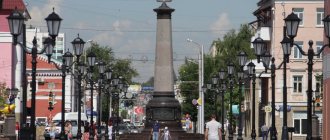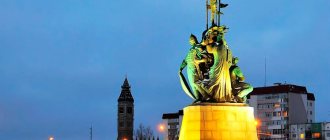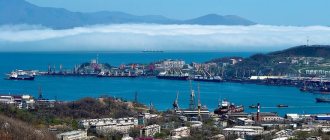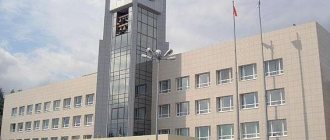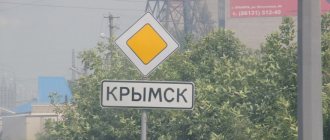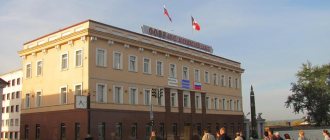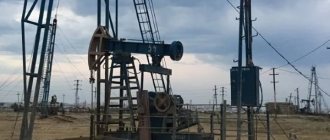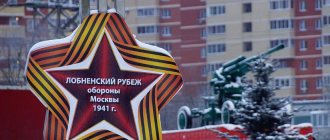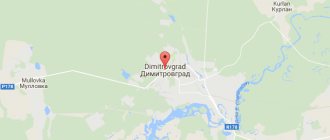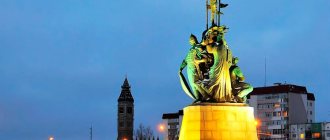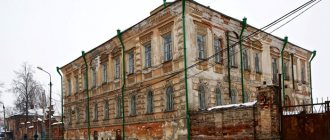Like the city itself, the sights of Nefteyugansk are unique in their own way. Growing out of a geological village, it is one of the few cities in the Russian Federation located entirely on the territory of an island. The northern part of the settlement is cut off from the mainland by the Ob River, and the southern direction is blocked by the left channel of this river - the Yuganskaya Ob. In addition, having the status of a regional center located in the Tyumen region, Nefteyugansk surpasses Khanty-Mansiysk, which is the capital of the administrative district, in its potential and size.
History of the city's formation
On June 22, 1961, a rich oil field was discovered near the village of Cheuskinsky by a team of geologists. Not far from this place, on the right bank of the river. Yuganskaya Ob scientists organized a temporary settlement, which later grew into a city with more than 100 thousand people.
Only 6 years passed, and by decree of the Council of the RSFSR, Nefteyugansk was given the status of a city of district significance. After another 10 years, in 1977, by order of the Minister of Petroleum Economy and Industry, a production association was organized, called Yuganskneftegaz.
In 1980, Nefteyugansk rose to the level of regional significance and became the key center of the region of the same name as part of the Khanty-Mansiysk administrative district.
1984 was marked by a significant event for the city - on September 3, a road bridge across the river was put into operation. Yuganskaya Ob. Before this, communication with the mainland was carried out using a ferry crossing, and in winter, ice communication routes were established
.
By the end of 2000, the number of residents living in Nefteyugansk exceeded 100 thousand. This allowed the city to take its place in the top three most populated cities in the district.
Nefteyugansk - the history of the founding of the city told in bronze. (photo tour)
The walking area, in the center of which this monument is located, is a circle with a diameter of 50 meters. The dominant feature of the complex, a stele 23 meters high, is a frame made of metal structures lined with a lightweight composite material simulating granite. The stele is crowned with a 2-meter coat of arms of the city of Nefteyugansk. The coat of arms itself weighs something like 3 tons, and its dimensions are 2 x 2.5 meters. The base of the stele is surrounded by a stylized image of a drop of oil hiding in the depths of the Yugansk land.
In the central part of the granite pedestal, the year of transformation of the workers' village into the city of Nefteyugansk is indicated. On the pedestal itself, in the center and on both sides of the stele, there are multi-figure sculptural compositions. There are a total of 12 bronze figures over 2.5 meters high, each weighing from 500 to 800 kilograms.
To the right of the stele is a sculptural group of builders. After the development of the first oil fields, during the years of All-Union construction, Nefteyugansk experienced a real boom in housing and industrial construction. Kindergartens, schools, residential buildings, and administrative facilities were built and put into operation one after another. In a short period, from 1961 to 1967, the small working-class village grew to the size of a city with a population of more than 14,000 people.
Historically, the first Ust-Balyk landing in 1961, which landed on the site where the monument is now located, included, in addition to geological surveyors, only carpenters who built the first housing on the banks of the Yugansk Ob. In the “Pioneers” complex, sculptor Volodya Sargsyan turned to the images of builders of the late 60s and early 70s. The most active period of construction and development of the city of Nefteyugansk. Behind the back of the builder holding a brick in his hand is a small brickwork. If you know where and what exactly to look for, you can find elements of the logo of one of the modern Ural brick factories. The bricks were made from life, so this little blunder leaked out.
Apparently, these guys are looking for a site to build a new residential building in Nefteyugansk. The first stone houses appeared in the city at the very end of the 60s. Today, according to data at the beginning of 2012, Nefteyugansk surpasses the administrative center of the district, Khanty-Mansiysk, both in population, more than 138,000 residents, and in industrial potential.
In the central part of the pedestal there are bronze figures of a geologist, oil workers and laboratory operators.
Thanks to the efforts of geological prospectors and oil workers, on December 18, 1962, a fountain with a daily oil flow of 800 tons erupted from well R-63. There have never been anything like this in the Tyumen region. After this, the village began to grow rapidly, and soon it was renamed Nefteyugansk, combining Oil and Yugansk Ob in this word. Already in February 1964, by resolution of the Komsomol Central Committee, the Tyumen region was declared an All-Union Komsomol construction site. In mid-September 1964, the headquarters of the All-Union Komsomol shock construction project for the development of the Ust-Balyk deposit was created.
On September 15, 1977, the head of the Ministry of Oil Industry, Nikolai Alekseevich Maltsev, signed the Order on the creation of the Yuganskneftegaz Production Association. Much later, this enterprise became owned by the oil company. After the auction on December 19, 2004, NK Yukos became the property of the oil company. Nowadays this is LLC RN-Yuganskneftegaz, the main production division.
Let's move on. The third group of figures is dedicated to the image of a young family. It was young families that grew the future city. Already in 1964, just 3 years after the first settlers arrived, 710 students sat at school desks. And by the end of 1967, the population of the Nefteyugansk working settlement reached 14,077 people. 16,705 sq.m. were put into operation. living space. There is a music school in the village; 2,208 students attend two secondary schools and one primary school, and they are taught by about 80 teachers. The evening secondary school is attended by 560 people. There is a hospital, an ambulance station and other social infrastructure facilities.
The boy has a pinwheel on a stick in his hand. Initially, according to the plan of sculptor Volodya Sargsyan, the turntable had several propellers; they were mounted on a round frame mounted on a holder. But, just a few days after the opening of the monument, it turned out that in Nefteyugansk there are “fans of the creativity” of our foundry and the sculptor Sargsyan in particular. In general, unknown “fans” broke the round frame with propellers. As a result, we simplified the design. Now this sculptural element is a familiar solution to many from childhood - a wooden stick, at one end of which a paper propeller is secured with a nail. The author of these lines did the same for himself in elementary school, and I think you did too.
The concept of the complex is designed for an all-round view; there are several approaches to the monument from different sides. If you go around the complex in a circle, then on the back side of the stele you can see reliefs on the topics of oil production and the history of the region.
On the reverse side of the central part of the pedestal there is a 3-meter memorial plaque with excerpts and indications of key dates from the history of the formation of the city.
Finally, a few facts: To build this complex, it was necessary to drive 87 piles, and the construction of the pedestal took 300 cubic meters of concrete. The monument itself and the architectural elements of the promenade around it are lined with granite and dolerite, more than 80 tons of stone in total. The authors of the architectural and sculptural complex “Pioneers” are the creative workshop of Volodya Sargsyan (Khanty-Mansiysk). Foundry work, installation and general contracting at the site - "Sculptor's Valley" of the Dubrovin foundry (Ekaterinburg). The Pioneers complex was created by order of the administration of the city of Nefteyugansk, with the financial support of OJSC NK Rosneft.
Thank you all and good luck in your business.
Historical monuments
Despite its young age, the history of the formation and development of Nefteyugansk has its own characteristics and interesting facts. For example, the place where the first settlement of the geological exploration party was previously located is still remembered by residents and is affectionately called “Piglet”.
The impetus for the formation of a large settlement on the site of a geological exploration camp was the famous well R-63, which produced 800 tons of crude oil every 24 hours. On December 18, 1962, this news spread across the Soviet Union, and the whole country learned about the existence of the small village.
Interesting monuments and sculptures:
- The “Youth” stela is the first officially opened monument in the city. The monument represents the youth of the new oil workers' settlement. The stela was erected in honor of the five-year anniversary of the founding of Nefteyugansk in 1973.
- Fans of Russian folk tales will be interested in meeting and taking photos with a number of sculptures dedicated to these works.
- On December 15, 2009, in microdistrict 2-A, the symbol of Nefteyugansk was installed - a brown bear, which was cast from cast iron in Chelyabinsk by special order. A bear standing on four paws is the emblem of Nefteyugansk and is depicted on the flag and coat of arms of the city.
- The Victory of Communism Square is located at the intersection of the street. Lenin and st. Neftyanikov. Here you can see a monument to the warrior-liberator. Nefteyugansk became one of several cities in which monuments were erected in honor of the 40th anniversary of the victory in the Great Patriotic War. The sculptural composition was inaugurated on May 9, 1985 and consists of a 10-meter victory star, a statue of a Komsomol soldier and an eternal flame memorial.
- Monuments of modern history include the bronze bust of V. A. Petukhov, the first head of the city, erected in memory of the brutal contract murder of the mayor elected by the people. The sculpture can be seen while walking along Komsomolskaya Alley.
In 1989, the first television studio in the region came into operation and the Yugansk television and radio broadcasting channel began its work.
The central city hospital is equal in age to the city itself. The first medical aid station was opened in 1961. Doctors rightfully consider this date to be the year the Nefteyugansk hospital was founded. It all started with a standard mobile shift trailer. After 4 years, a department was opened that could already accommodate up to 15 bedridden patients. In 1965, the first child was born in the geological village, born in a small hospital. From this moment on, the history of the maternity ward of the future city hospital opens, in which all the mothers of Nefteyugansk will subsequently give birth to their children.
The period of formation of the city took place at the end of the Soviet Union era. It is with this circumstance that local historians associate the absence of a monument to Lenin in Nefteyugansk.
The fight for Nefteyugansk. How an oil town almost became a rotational camp
With the collapse of the Soviet Union, the country's oil complex began to collapse. The fact is that in the early 90s the new government started talking about the ineffectiveness of state property. Industrial ties were collapsing, production was in a critical situation. The only way out, according to ruling circles, was to be large-scale privatization of state property, which also affected the oil sector. Thus, new players in the Russian economy began to emerge from the ruins of the Ministry of Energy. “Oil kings” appeared. But not all northerners welcomed their new owners with open arms. An illustrative example was demonstrated by the Nefteyugans.
Nefteyugansk today || Photo source: syl.ru
People's Mayor
A small northern city with a population of no more than 100 thousand people in those days. Almost half of the residents are employees of Yuganskneftegaz. With the presence in these places of the young, led by Mikhail Khodorkovsky, the quiet life ended. The oil king needed to take possession of the oil wealth at all costs, and turn the city itself into an ordinary rotational camp. True, these plans were not destined to come true; the mayor of the city, Vladimir Petukhov, or rather, his shed blood, became an obstacle to selfish goals.
In 1996, Vladimir Petukhov won the local elections and headed Nefteyugansk. However, the path to the mayor's chair was not easy.
— At that time, the leadership of the association, which was entirely subordinate, did not allow the mayoral candidate Petukhov to meet with people. All heads of organizations that are part of Yuganskneftegaz were warned about the ban. Nevertheless, I was one of the first to invite Petukhov to speak to the team. It was on the basis of DRSU, where I worked as the head of asphalt concrete production. During the conversation, we realized that the person really stands up for the working people and for the preservation of the city, and we decided to support him, ” recalls Viktor Fateev, a member of the Union of Veterans of Ugra, chairman of the Nefteyugansk and Nefteyugansk district community.
Having bypassed all the conflicts and gained an overwhelming majority of votes, Petukhov still led the city. His team did a lot, starting to restore order in the city’s trade, improvement and transport system. However, it was difficult to obtain tax payments from the oil company to the city budget. Thus, according to information from the city finance commission, an analysis of the execution of the Nefteyugansk budget for the first half of 1998 showed that YUKOS paid only 4 percent of taxes to the budget from the annual forecast.
People's Mayor || Photo source: cont.ws
Gift for an oligarch
Unable to accept this, Petukhov publishes an appeal to Russian President Boris Yeltsin in the local press, in which he puts forward strict demands, including: initiation of a criminal case for concealing taxes, repayment of accumulated arrears of taxes, fines and penalties, cessation of interference in the activities of local authorities self-government of the city of oligarchs from Rosprom-YUKOS-Menatep, as well as transfer the state stake in OJSC Yuganskneftegaz to pay off debts to Nefteyugansk, Pyt-Yakh, Nefteyugansk district.
Nine days after the publication of this appeal, the people's mayor dies from the killer's bullets.
“It happened on the morning of June 26th. Just on Khodorkovsky’s birthday. Supposedly it was such a gift for him. In the first hours they tried to hide the murder, but people found out anyway and began to flock to the scene of the tragedy. People took it as a personal loss, ” says Viktor Fateev.
A few hours later, residents began to flock to the central square of the city, where the mayor’s office and the Yuganskneftegaz office were located. More than 30 thousand people took part in the spontaneous rally.
A few hours after the tragedy, Nefteyugans gathered for a spontaneous rally || Photo source: pp.userapi.com
To be a city
According to many experts, it was the Nefteyugansk tragedy that became the impetus for the return of oil wealth to state control. Only two years will pass, Vladimir Putin will be elected president of Russia, and he will begin the fight against the oligarchs. Nefteyugansk will say goodbye to the prospect of becoming a rotational camp.
Leisure organization
The infrastructure of cultural and mass entertainment is quite developed and provides residents and guests of the city with a wide choice of places to go in Nefteyugansk.
For curious visitors who want to learn the history of the region, the following are open:
- “Center of National Cultures” - here you can get comprehensive information about all the nationalities and national traditions of the population of Nefteyugansk. The center is located at 11 microdistrict, no. 62.
- "Museum of the river" Ob" - founded in 1989. The main exhibitions are dedicated to the way of life of the Khanty and Mansi peoples. Also of interest to visitors are exhibitions telling about the development of shipping on the Ob and the flora and fauna of the river. Address: 9 microdistrict, no. 28.
The religious complex, located in microdistrict 2-A, includes:
- “Orthodox Church of the Holy Spirit” - the official opening took place on October 9, 1997. Despite the young age of both the city itself and the temple, the Orthodox community of Nefteyugansk dates back more than 120 years.
- "Temple of the Pochaev Icon of the Mother of God."
- Monument to Saints Peter and Fevronia.
- Sculptural composition dedicated to Saint Panteleimon.
- The mosque, built in 1999 according to the design of the St. Petersburg architect I. Tipigin. Address: 9 microdistrict, 34b.
- "The Magic Flute" is a children's puppet theater. It has been fully operational since 2005. Address: 9 microdistrict, no. 39.
On the territory of the region there are also many interesting monuments telling about the ancient history of the region, among which we can highlight the settlement “Winter Sovkuny”, located on the Maly Salym River. Visitors will be interested in examining the works of ancient sculpture masters up close. Some of the exhibits were made more than 3 centuries ago. In 1993, the tract was given the status of a historical monument with special cultural significance.
Entertainment centers where you can relax are the sports and entertainment center “Pearl of Ugra”, located on the square on the street. Gagarin. It will be interesting to spend time here for both children and their parents . It offers visitors:
- aquapark;
- saunas and baths;
- swimming pool and solarium;
- sports grounds and gyms.
By visiting the entertainment and Fort Boyard, everyone will be able to take part in real adventures, the memories of which will remain for a long time.
Fans of billiards and bowling are offered a number of establishments specializing in these sports.
The small size and low number of residents of the city do not fit at all with the number of entertainment venues and restaurants, which have a unique flavor of the northern regions of Russia.
